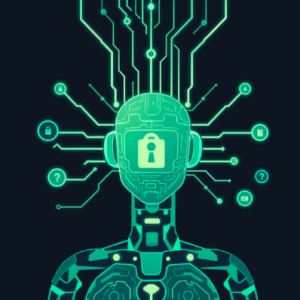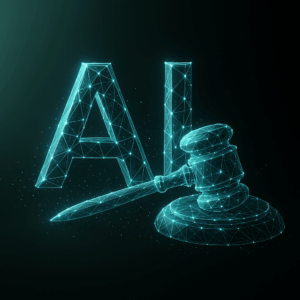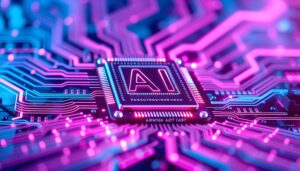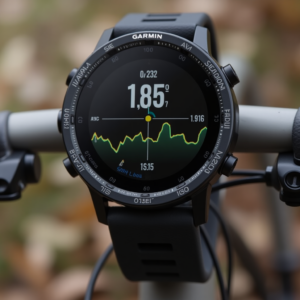
Palo Alto Networks, one of the world’s leading cybersecurity firms, has officially announced the acquisition of Protect AI, a startup specializing in artificial intelligence (AI) security. The announcement was made during the RSA Conference 2025 and has already begun reshaping discussions around securing the future of AI infrastructures.
The acquisition deal, estimated to be valued between $650 million and $700 million, represents a strategic move by Palo Alto Networks to address the rapidly emerging risks tied to the use of AI systems in enterprises. As businesses increasingly integrate AI into their operations, securing these intelligent systems has become a top priority.
This article explores every critical aspect of the acquisition, from the details of the transaction to the future impact it will have on cybersecurity, enterprises, and the broader technology industry.
The Background: Why Palo Alto Networks Chose Protect AI
The rise of artificial intelligence across industries has been monumental. Organizations across healthcare, finance, education, and manufacturing are now deploying AI tools to improve decision-making, automate processes, and develop innovative products. However, along with these benefits come serious vulnerabilities.
AI models are susceptible to various attacks, including:
-
Data poisoning, where malicious data is injected during the training process.
-
Model inversion, allowing attackers to infer sensitive training data.
-
Adversarial examples, where subtle manipulations in input data cause AI to make incorrect predictions.
-
Supply chain attacks, targeting the third-party components often used in AI systems.
Traditional cybersecurity solutions have not been designed to fully address these AI-specific vulnerabilities. Recognizing this gap, Palo Alto Networks moved decisively to acquire Protect AI, a company already specializing in these very risks.
Through this acquisition, Palo Alto Networks gains access to state-of-the-art tools that identify, mitigate, and manage the risks posed to AI systems throughout their lifecycle.
What Protect AI Brings to the Table
Founded in Seattle, Protect AI has built a strong reputation for developing advanced solutions focused on securing machine learning (ML) pipelines and protecting AI models.
Their offerings include:
-
Scanning AI pipelines for vulnerabilities
-
Auditing ML model training and deployment processes
-
Monitoring data flows within AI systems
-
Detecting unauthorized model access or tampering
-
Ensuring AI development complies with regulatory standards
Protect AI is also known for championing the emerging discipline of MLSecOps (Machine Learning Security Operations), providing companies with the frameworks needed to embed security into the AI development lifecycle.
Now, these capabilities will become a part of Palo Alto Networks’ already powerful cybersecurity platforms, particularly Prisma Cloud.
Integration With Prisma Cloud and AIRS
The integration of Protect AI’s technologies is expected to significantly enhance Palo Alto Networks’ Prisma Cloud platform. Prisma Cloud, a leading Cloud Native Application Protection Platform (CNAPP), already offers advanced capabilities in securing cloud infrastructure, applications, and workloads.
With Protect AI’s technology:
-
Data Lineage Monitoring will allow organizations to track data origins and transformations.
-
ML Pipeline Auditing will ensure that every step of AI development is transparent and secure.
-
Model Vulnerability Scanning will identify weaknesses that could be exploited by adversaries.
-
Compliance Verification will help organizations meet regulatory requirements like GDPR, HIPAA, and others.
Additionally, Protect AI’s tools will enhance AIRS (AI-Driven Risk Scoring) — an AI-powered risk assessment module within Prisma Cloud. Enterprises will be able to quantify the risks tied to their AI assets, a capability previously missing from most cybersecurity solutions.
Industry Reactions to the Acquisition
The cybersecurity and AI industries have welcomed the acquisition with enthusiasm. Industry analysts from firms such as Gartner, Forrester, and IDC noted that this deal places Palo Alto Networks firmly at the forefront of the AI security movement.
A senior analyst at Forrester stated:
“This acquisition demonstrates a clear understanding of where cybersecurity must evolve. Protecting AI models is crucial, and Palo Alto Networks is leading that charge.”
Investors also responded positively. Palo Alto Networks (PANW) stock experienced a modest increase in value following the announcement, reflecting confidence in the company’s strategic vision for securing AI systems at scale.
Furthermore, many experts believe this acquisition sets a precedent. Other major cybersecurity players are now expected to follow Palo Alto’s lead in prioritizing AI security within their product portfolios.
Addressing the Emerging Risks of AI Systems
The acquisition also highlights a critical challenge facing the tech world today: AI systems introduce unique security challenges that cannot be addressed with traditional tools alone.
These include:
-
Model Drift — where models become less accurate over time due to changing data environments.
-
Bias and Ethical Violations — where AI systems unintentionally reinforce harmful biases.
-
Supply Chain Vulnerabilities — where weaknesses in third-party tools compromise the AI ecosystem.
Protect AI’s focus on full-lifecycle security ensures that these risks are addressed from the very beginning of the AI development process and maintained throughout the system’s operation.
This approach is essential because AI systems today are no longer isolated experiments—they are embedded in critical infrastructure, healthcare diagnostics, autonomous vehicles, financial systems, and more.
Human Oversight Remains Vital
Despite the rise of automated tools and AI-driven solutions, Palo Alto Networks has emphasized that human expertise remains crucial in AI security.
The goal is not to replace human security professionals but to empower them with better tools. Protect AI’s systems are designed to:
-
Alert human operators about potential model risks.
-
Provide detailed logs for security audits.
-
Enable compliance officers to review and certify AI models.
-
Help data scientists maintain secure and ethical AI development practices.
This hybrid model of AI-driven insights paired with human judgment will likely become the gold standard for AI security practices going forward.
Impact on Enterprises
For enterprises, the acquisition offers a host of new advantages. Organizations that have embraced AI—especially those operating in highly regulated industries—will now have access to much-needed security and compliance tools.
Benefits include:
-
Early Threat Detection: Enterprises will be able to identify AI risks before deployment, preventing costly security breaches.
-
Full Lifecycle Visibility: Tools will allow monitoring of data, models, and pipelines across their entire lifecycle.
-
Easier Compliance: Organizations can now prove compliance with GDPR, HIPAA, CCPA, and similar regulations related to AI models.
-
Operational Efficiency: Teams can integrate security into their AI workflows without drastically slowing down innovation.
Overall, this acquisition empowers enterprises to innovate with confidence, knowing that their AI applications are secure, ethical, and compliant.
Future Plans for Palo Alto Networks and Protect AI
The acquisition of Protect AI is just the beginning. Palo Alto Networks has announced its intention to continue investing heavily in AI-SecOps (Artificial Intelligence Security Operations) and Machine Learning Risk Management.
Future initiatives include:
-
Standalone AI Security Modules: Beyond Prisma Cloud, Palo Alto plans to release new security products tailored specifically for AI-driven enterprises.
-
AI Threat Intelligence: Palo Alto’s Cortex XSIAM platform will be expanded to include threat hunting for AI-specific vulnerabilities.
-
Training and Certification Programs: Expect Palo Alto Networks to offer educational content and certifications on AI security best practices.
-
Penetration Testing Services for AI Models: Enterprises will soon be able to simulate attacks on their AI systems to proactively identify vulnerabilities.
These moves are expected to further cement Palo Alto Networks’ leadership in the cybersecurity industry as it transitions into the AI era.
The acquisition of Protect AI by Palo Alto Networks marks a significant turning point in the evolution of cybersecurity. By addressing the security challenges specific to AI systems, Palo Alto Networks is not only strengthening its portfolio but also setting the agenda for the future of cybersecurity.
As AI becomes increasingly central to enterprise innovation, securing AI systems is no longer optional—it is an operational necessity. Through this acquisition, Palo Alto Networks is ensuring that enterprises can innovate fearlessly, deploying powerful AI solutions without sacrificing security, compliance, or ethical responsibility.
Feel free to check out our other website at : https://synergypublish.com



